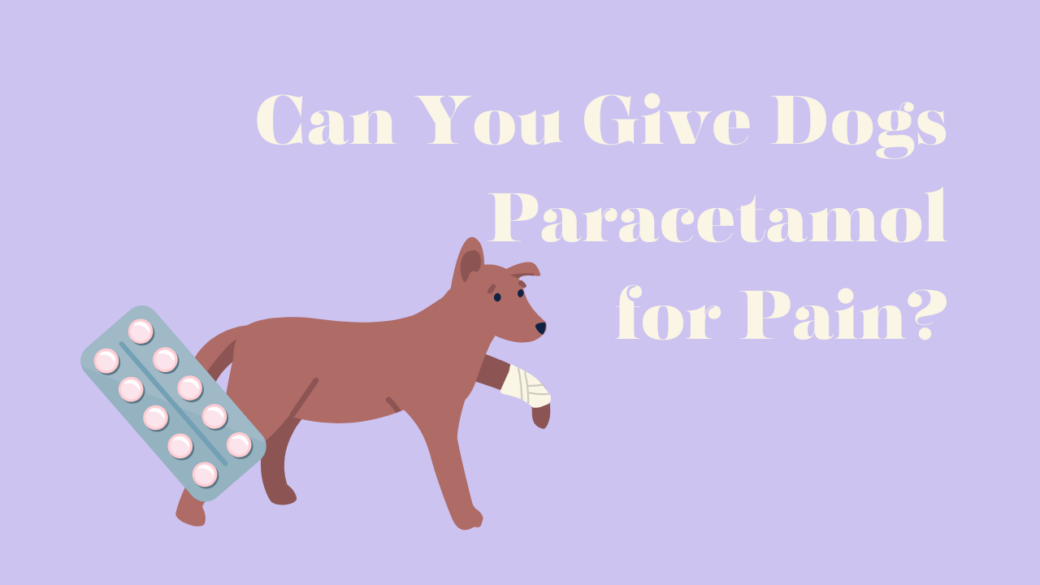Seeing a pet in pain can be a heartbreaking experience. Many pet owners would do whatever it takes to ensure their dogs were healthy and happy; taking away the pain is usually the pet owner’s utmost priority in these situations. However, this can be dangerous without a vet’s advice, with some dog owners wondering if dogs can be given human medications.
Paracetamol, aspirin, and other painkillers are common household medications. Due to their accessibility, relatively inexpensive price, and the success they have at easing pain for humans, does this mean these medications can be given to dogs?
No, you should not give your dog paracetamol or any other human medications. Although these painkillers are generally safe for humans, it should not be assumed that they are also safe for animals; several pets end up poisoned each year due to their owners giving them paracetamol and other medications meant for humans. In certain circumstances, paracetamol will be prescribed by a vet.
If you find yourself asking, “Can you give dogs paracetamol for pain?” then this article is here to inform you of the risks associated with dogs taking human pain relief, primarily paracetamol.
Table of Contents
What is Paracetamol?
Paracetamol is a common human medication used to treat mild to moderate pain and fever. It is usually in tablet form and can be bought over the counter in most pharmacies and supermarkets.

As this popular painkiller is safe for children and pregnant women to use, it is often thought that this medication can be given to dogs, too. However, a veterinary medicine professional should only ever make this decision.
Can Dogs Be Given Paracetamol?
Although dogs are less sensitive to paracetamol than cats, this drug should only be administered to the pet after a veterinary surgeon advises and prescribes it. Owners should not give their dogs human paracetamol. If a vet prescribed paracetamol, the vet’s dosage of this drug would be tailored to the needs and measurements of the animal, unlike ordinary paracetamol found in pharmacies.
There are several reasons why a dog should not be given paracetamol unless prescribed by a vet, as shown below:
- Underlying health conditions, such as kidney disease, can be made worse by taking paracetamol meant for people.
- Human-strength paracetamol could easily overdose a dog. Signs of a paracetamol overdose in dogs include abdominal pain, difficulty breathing, drooling, liver damage, pale gums, seizures, and stomach ulcers.
- Paracetamol can also hide injuries that require veterinary attention by masking your dog’s pain.
- Other medications a dog is on might be affected by paracetamol.
Simply put, dogs have very different anatomy and sizes from humans, meaning medications meant for people should not be given to these animals unless a veterinary surgeon says otherwise.
As paracetamol tablets are common in households, dog owners should be vigilant in keeping human painkillers out of the pet’s reach. If your dog has swallowed a human painkiller without your knowledge, you must contact a vet immediately.
Can Dogs Be Given Other Human Pain Relief?
Other medications formulated for humans, such as aspirin, Calpol, and ibuprofen, also should not be administered by dog owners. Although these are common and effective medications for people, they can cause dogs to suffer from the drugs’ toxic effects and could prove fatal in some cases.
Aspirin
Aspirin is commonly used to relieve pain caused by headaches, toothaches, and other temporary aches. It can also be used as an anti-inflammatory or blood thinner. Even though the drug is regularly used by people, it can cause serious side effects in dogs, especially if they are given aspirin frequently.
An adult aspirin could be too high a dose for small and/or young dogs. Stomach ulcers are a regular side effect of aspirin in dogs, but larger overdoses of this drug could potentially cause haemorrhaging, seizures, coma, and even death.
Calpol
Calpol, which is a liquid syrup mixture of ibuprofen and paracetamol for children, should not be administered to dogs. This pain relief and anti-inflammatory medication includes paracetamol, which vets can sometimes prescribe, and ibuprofen, which should never be given to dogs. Although it is a lower dose than adult painkiller, it does not make it safer for dogs.
For more information on giving dogs Calpol, read this article.
Ibuprofen
Ibuprofen is a common medication used to treat inflammation and pain in people; however, ibuprofen should never be given to dogs. This drug can be extremely toxic to dogs and cats; it can cause damage to their intestines, kidneys, and stomachs.
A toxic reaction can occur rapidly after a dog has eaten ibuprofen. Signs of its toxic effects include diarrhoea, lethargy, and vomiting. These signs are essential to look out for, as ibuprofen can cause serious problems, like kidney and liver damage, in dogs. As soon as your dog shows these signs, contact a vet immediately.
6 Signs of Pain in Dogs
Dog owners should contact their local veterinary practices immediately if they suspect their pets are in pain. There are common signs to look out for to determine whether a pet is in pain or not.
Behaving Strangely
A change in normal behaviour can indicate a dog is experiencing pain. If the dog would usually greet you at the door or run up the stairs, but these behaviours have stopped, and the dog now appears withdrawn, this could be a sign of pain.
Of course, as the owner, you will know your dog’s normal behaviour; if you notice any changes, this could be a cause for concern.
Breathing Changes or Panting
Panting after exercise or in hot weather is normal; similarly, if you own a nervous dog, you might find they frequently pant when stressed. However, heavy panting can be a sign the dog is experiencing pain.
Also, if your dog has difficulty breathing, this could indicate pain. They might be struggling to draw in a breath or experiencing shortness of breath.
Excessive Grooming
Dogs will instinctively begin licking their wounds and cuts. Not only does this help them care for their injuries, but it can also soothe them. This can be easy to spot if the injury is external, but it can be tougher to understand if the pain is internal.

Difficulty Moving
Limping and stiffness when moving are two of the main signs of pain dogs can show, especially if the pain is in their joints and limbs. This sign is most often seen in dogs suffering from arthritis, injuries, or sore paws. It is commonly noticed when a dog refuses to climb stairs, walks slower than usual, or has very little interest in exercise.
This symptom of pain is regularly shown by senior dogs.
Restlessness
Although some dogs might experience difficulty moving, others might begin to move more when they are in pain. If a dog is pacing, unable to sit or lie down comfortably, or sleeping less, these can be signs of restlessness. These can be warning signs of an underlying issue.
Trembling
Shaking or trembling can be signs of feeling the cold, getting old, as well as pain. This is why knowing whether or not trembling is a definite indicator of pain can be confusing. It can also be a symptom of kidney disease, pancreatitis, and poisoning.
Again, if your dog shows any of these signs and you become concerned, contact the vet for an appointment as soon as possible.
Can You Give Dogs Paracetamol: FAQs
Knowing if you can give a dog paracetamol is critical when you’re a dog owner, and your pet is suffering from pain. However, unless a vet prescribes paracetamol, this drug should not be given to your dog.
If you have any further questions, the answers should be provided below:
My vet told me to give my dog paracetamol – is this okay?
Although this can be daunting, especially after reading the information in this article, you should be able to take your vet’s advice. The main aspect to follow is the dosage your vet has said to give the dog.
If you do have concerns and want to avoid giving your dog paracetamol, discuss this with the vet or get a second opinion from another veterinary surgeon.
How much paracetamol for a 15kg dog?
The recommended dosage of paracetamol for dogs will be advised by the vet treating them; it is essential to follow the vet’s instructions carefully, as the wrong dose could result in serious health problems or even a fatal reaction.
Generally, dogs will receive 2-4mg of paracetamol per kilogram of body weight, meaning a 15kg dog would receive 40-60mg of paracetamol in one dose. This dose should be given as needed every four to six hours. However, it is best to follow a vet’s advice.
To Sum Up
Paracetamol is a very popular painkiller for people, but this does not mean it should be used on dogs without proper veterinary advice. If the wrong dosage is used, paracetamol could cause severe damage to the dog’s health. Under certain circumstances, and after a vet prescribes the correct dosage of the drug, paracetamol is given to dogs to ensure their pain is treated quickly and safely.
If a vet prescribes paracetamol to your dog, this decision will have been made by weighing the benefits and risks of this medication. Your dog’s full medical history will have been checked over to ensure the pain relief is safe to use and will not negatively affect the animal’s health.
Therefore, if you ever find yourself wondering, “Can I give my dog paracetamol?” it is best to err on the side of caution and speak to a vet. Unless specially directed to do so by a vet, you should never give your dog paracetamol or other drugs formulated for humans.
Disclaimer: This article is for informational purposes only and should not be used as a substitute for professional veterinary advice.

